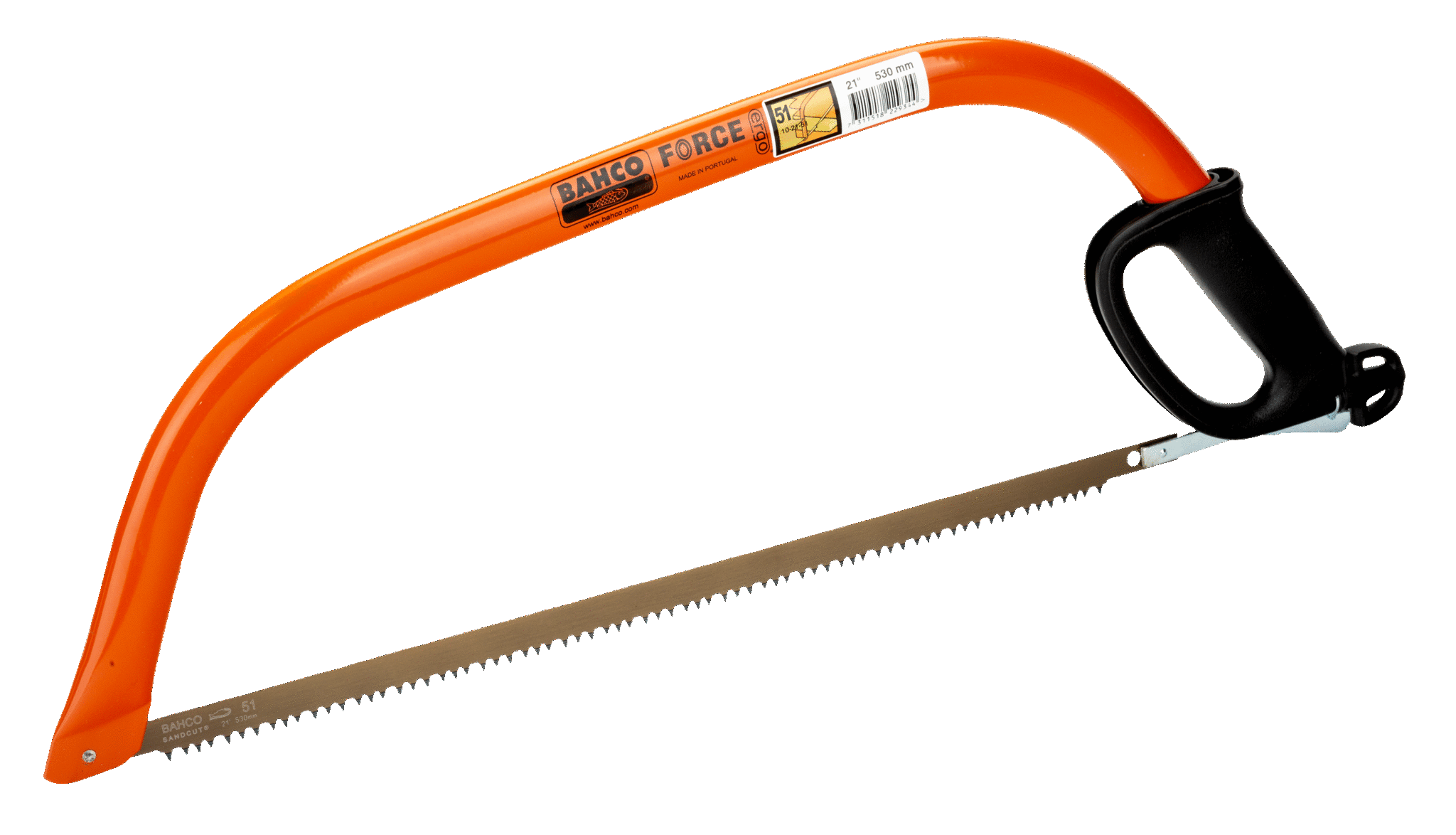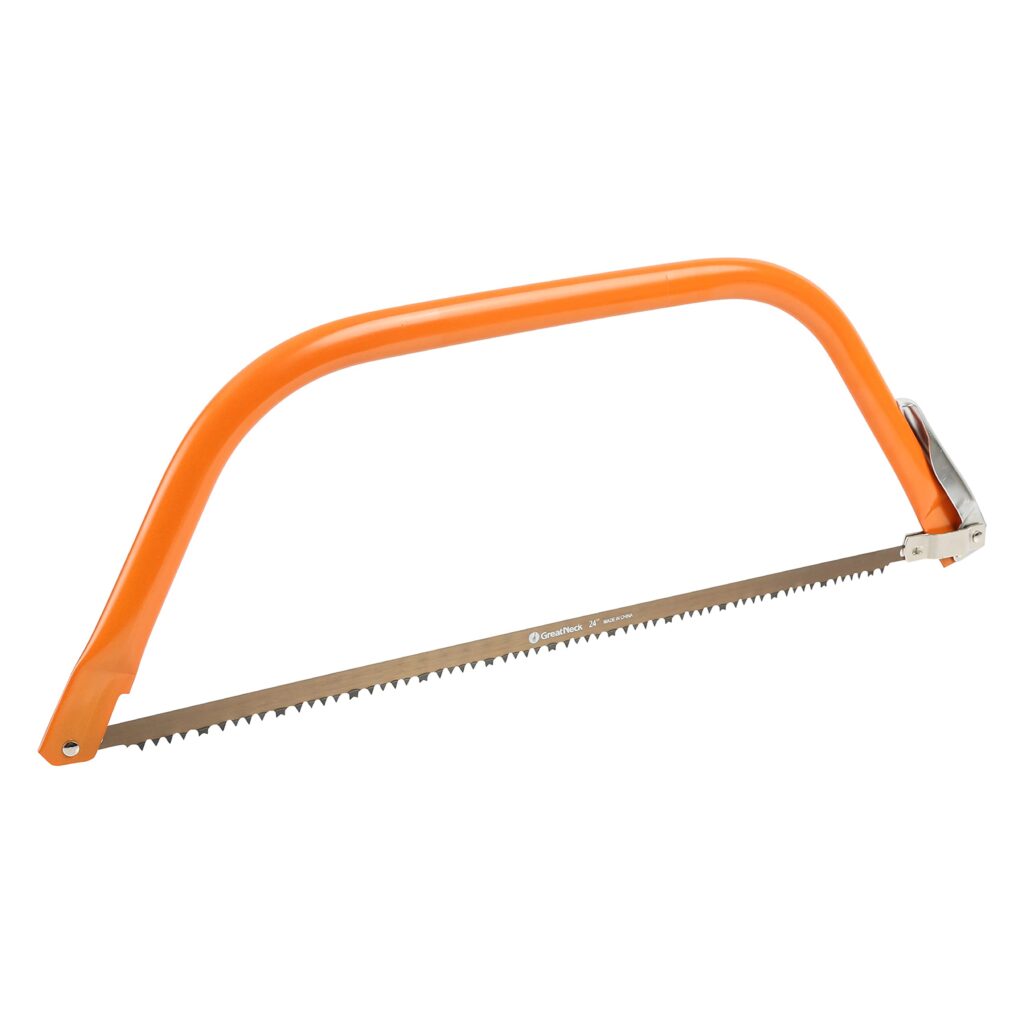A bow saw is a type of hand saw with a narrow blade. It is held in tension by a frame.
This tool is essential for woodworking and cutting branches. Understanding what a bow saw looks like can be helpful if you’re into DIY projects or gardening. It typically features a curved frame, often made of metal or wood, that resembles the shape of a bow.
Attached to this frame is a thin, straight blade with sharp teeth designed for cutting. The blade is kept tight by the frame, ensuring efficient cutting action. Bow saws come in various sizes, making them versatile for different tasks. Whether you are pruning trees in your garden or working on a woodworking project, knowing what a bow saw looks like can help you choose the right tool for your needs.
Introduction To Bow Saws
Bow saws are essential tools in woodworking. Their unique design and functionality make them a favorite among woodworkers. But what exactly does a bow saw look like? Let’s dive into its features and importance.
Definition
A bow saw is a hand tool with a thin, sharp blade. This blade stretches between the ends of a metal or wooden frame. It looks like a bow, hence the name. The blade usually has crosscut teeth, making it perfect for cutting wood.
Importance In Woodworking
Bow saws are crucial for various woodworking tasks. Their design allows precise and quick cuts. This makes them ideal for pruning trees or cutting firewood. Woodworkers appreciate their portability and ease of use. Bow saws provide control, which is vital for detailed work.
Key Components
Understanding the key components of a bow saw is crucial for using it effectively. A bow saw has three main parts that work together to make cutting wood easier. These parts are the frame, blade, and handle. Each part plays an essential role in the saw’s function.
Frame
The frame is the backbone of the bow saw. It holds the blade in place and provides stability. Typically, the frame is made from metal or strong plastic. It forms a bow shape, which gives the saw its name. The frame must be sturdy to handle the tension of the blade.
Blade
The blade is the cutting part of the bow saw. It is a long, narrow strip of metal with sharp teeth. The blade is designed to cut through wood efficiently. Different blades are available for various types of cutting tasks. The blade is attached to the frame with pins or screws.
Handle
The handle is where you hold the bow saw. It provides grip and control while cutting. Handles are usually made of wood, plastic, or rubber for comfort. A good handle reduces hand fatigue and increases precision. The handle is often located at the end of the frame.
Types Of Bow Saws
Bow saws come in different types, each serving unique purposes. Understanding the types can help you choose the right tool for your needs. Here, we’ll explore the traditional and modern bow saws.
Traditional Bow Saw
The traditional bow saw features a simple design. It includes a wooden frame and a narrow blade. The blade is held in tension by a twisted cord or wire. This saw type is ideal for cutting logs and firewood. Its lightweight frame makes it easy to handle. People often use it for outdoor activities like camping and hiking.
Modern Bow Saw
The modern bow saw is an upgraded version of the traditional one. It typically has a metal frame, which is more durable. The blade in a modern bow saw is replaceable. This feature extends the tool’s lifespan. Modern bow saws also have ergonomic handles. These handles provide a better grip and reduce hand strain. They are perfect for both garden and yard work. Their efficiency and ease of use make them popular among hobbyists and professionals alike.

Credit: www.bahco.com
Blade Characteristics
A bow saw is a versatile cutting tool. Its blade characteristics define its efficiency. Understanding these aspects helps in choosing the right saw.
Length
The length of a bow saw blade varies. Common lengths are between 21 inches and 36 inches. Longer blades handle larger branches and logs. Shorter blades are better for detailed work. Choose the length based on your cutting needs.
Teeth Per Inch
The teeth per inch (TPI) significantly affect cutting performance. Fewer teeth (less TPI) cut faster but are rougher. More teeth (higher TPI) provide smoother cuts but take longer. Standard bow saws usually have 4 to 6 TPI. This balance offers both speed and smoothness.
Material
The material of the blade influences durability and sharpness. Most bow saw blades are made of steel. High-carbon steel offers excellent sharpness and longevity. Some blades have rust-resistant coatings. These coatings extend the blade’s life in outdoor conditions.
| Characteristic | Details |
|---|---|
| Length | 21 to 36 inches |
| Teeth per Inch | 4 to 6 TPI |
| Material | High-carbon steel, rust-resistant coatings |
Frame Designs
Bow saws are essential tools for many woodworking and gardening tasks. The frame design is a crucial part of what makes a bow saw effective. The frame holds the blade, providing the tension needed for cutting. There are two main types of frames: wooden and metal. Each type has its own unique characteristics and benefits.
Wooden Frame
Wooden frames have a classic and traditional look. They are often crafted from durable hardwoods like oak or beech. These woods provide strength and stability. Wooden frames are also lightweight, making them easy to handle. Some users prefer the natural feel and aesthetics of wood.
A wooden frame bow saw often has a simple, elegant design. It usually consists of a rectangular frame with a blade attached at both ends. The tension is created by twisting a cord or using a turnbuckle. This design allows for quick and easy blade changes.
Metal Frame
Metal frames are known for their strength and durability. They are typically made from steel or aluminum. These materials provide a strong and rigid frame, which helps with precise cutting. Metal frames are also resistant to weather and corrosion.
A metal frame bow saw usually features a tubular design. This makes the saw lightweight yet sturdy. The tension mechanism in a metal frame saw is often a simple lever or screw system. This allows for easy adjustments and ensures the blade stays tight during use.
Some metal frame bow saws have ergonomic grips. These grips improve comfort during extended use. The modern design of metal frames appeals to many users for its functionality and durability.

Credit: www.amazon.com
Handle Varieties
Understanding the different handle varieties of a bow saw can help you choose the right one for your needs. The handle plays a crucial role in comfort and control while cutting. Let’s explore the two main types of handles: ergonomic handles and traditional handles.
Ergonomic Handles
Ergonomic handles are designed for comfort. They reduce hand strain during prolonged use. These handles are often molded to fit the natural shape of your hand. This design minimizes fatigue and enhances grip.
Many modern bow saws feature ergonomic handles. They are made from materials like rubber or plastic. These materials offer a non-slip grip, even when wet. An ergonomic handle is ideal for those who use a bow saw frequently.
| Feature | Benefit |
|---|---|
| Molded Shape | Fits natural hand shape |
| Non-slip Materials | Better grip |
| Reduced Hand Strain | Less fatigue |
Traditional Handles
Traditional handles offer a classic design. They are usually made from wood or metal. These handles provide a sturdy and reliable grip. Though not as comfortable as ergonomic handles, they are highly durable.
Wooden handles have a natural, warm feel. Metal handles are often coated to prevent rust. Some users prefer traditional handles for their simplicity and strength. They are ideal for heavy-duty cutting tasks.
- Wooden Handles: Natural feel, sturdy grip
- Metal Handles: Coated for rust prevention, very durable
Choosing The Right Bow Saw
Choosing the right bow saw is important for your projects. The right saw makes your work easier and more efficient. But how do you choose the best one? Consider your project requirements and personal preferences. This guide will help you understand what to look for.
Project Requirements
First, think about the project requirements. Are you cutting thick branches or small twigs? A large bow saw with a strong blade is good for thick branches. For smaller tasks, a smaller saw will do. The size and type of blade matter too. Some blades are better for green wood, while others suit dry wood. Make sure to match the saw to your project needs.
Personal Preference
Your personal preference also plays a role. Some people prefer lightweight saws. These are easier to handle for long periods. Others like heavier saws for their sturdiness. The handle design is important too. A comfortable handle reduces hand fatigue. Some handles have extra grip for better control. Choose a saw that feels good in your hand.
In summary, choosing the right bow saw depends on your project and personal needs. Consider these factors to find the perfect tool for you.
Care And Maintenance
A bow saw has a thin, straight blade held in place by a metal or wooden frame. It’s perfect for cutting branches and logs. Regular cleaning and sharpening ensure it stays effective.
Proper care and maintenance can extend the life of your bow saw. Regular upkeep ensures that your tool performs efficiently. Let’s explore some practical tips for cleaning and maintaining your bow saw.Cleaning Tips
Clean your bow saw after each use. Remove sawdust and debris with a brush. Wipe the blade with a damp cloth to prevent rust. Use a mild soap if needed. Dry the saw completely before storing. Store the bow saw in a dry place. Moisture can cause rust and damage. Hang it on a peg or keep it in a toolbox. This prevents accidental damage and keeps the saw in good condition.Blade Replacement
Check the blade for dullness or damage. Replace the blade if it is worn out. Use the correct size and type of blade for your saw. Follow the manufacturer’s instructions for blade replacement. Wear gloves while replacing the blade to protect your hands. Loosen the tension on the saw frame. Remove the old blade carefully. Attach the new blade and tighten the tension. Ensure the blade is secure before using the saw. Regular blade replacement keeps your bow saw sharp and effective. It also makes cutting tasks easier and safer. “`
Credit: www.linkedin.com
Frequently Asked Questions
What Is A Bow Saw Used For?
A bow saw is used for cutting wood. It is ideal for tree branches and logs. Its sharp, serrated blade efficiently handles rough cuts.
How Does A Bow Saw Look?
A bow saw has a ‘C’ shaped frame. It features a long, straight blade with large teeth. The frame is usually metallic.
What Materials Can A Bow Saw Cut?
A bow saw primarily cuts wood. It can handle both green and dry wood. It’s effective for pruning and logging tasks.
Is A Bow Saw Easy To Use?
Yes, a bow saw is user-friendly. Its design allows for controlled, powerful cuts. It’s suitable for both novices and professionals.
Conclusion
A bow saw is a handy tool for many cutting tasks. Its unique frame and toothed blade make it easy to recognize. Whether cutting wood for a project or clearing branches, a bow saw is effective. Understanding its design helps you use it better.
Remember to handle it with care for safety. So, next time you see one, you’ll know exactly what it is and how to use it. Enjoy your DIY adventures with this helpful tool!
